
Are you ready to learn the basics of creating a natural hair regimen?
Well, congratulations!
You’ve now taken the first step towards taking better care of your hair.
So, what's next?
Where do you go from here?
What kind of products do you need?
What products do you already have in your bathroom cabinets?
It's common for ladies that have recently decided to go natural to get overwhelmed by the sheer amount of hair-related information on the internet.
There are seemingly countless products, tools, methods, and techniques for nearly everything hair-related, from everyday moisturizing to deep conditioning. If you're new, it may feel like the options are almost endless.
In order to be successful, especially as a newbie, we recommend that you start with a natural hair regimen that's as simple and flexible as possible. It's also important that your regimen is adaptable based on the ever-changing needs of your hair.
There are many factors that impact the needs of your hair on any given day, such as the temperature outside, humidity, hard water, the hair products you use, and much more.
Even if your hair feels thoroughly hydrated and moisturized this week, it might become lifeless and extremely dry the next week. You'll need to be willing and able to adapt to the unique needs of your hair.
Ideally, the best natural hair regimens involve products that work together in addressing two of the most important hair needs: protein and moisture.
Any hair regimen that doesn’t consider protein and moisture might fail to work well in the long run.
Table of Contents
- 1 You’re the Real Natural Hair Guru
- 2 What You’ll Need to Build a Basic Healthy Hair Care Routine
- 3 How to Choose a Good Moisturizing Shampoo
- 4 1. Does the Moisturizing Shampoo Contain Harsh Sulfates?
- 5 2. Does the Moisturizing Shampoo Contain Gentle Surfactants?
- 6 3. Salon vs. Drugstore Moisturizing Shampoos
- 7 Selecting a Moisturizing Deep Conditioner
- 8 What Should You Look for in a Moisturizing Deep Conditioner?
- 9 How to Use a Moisturizing Deep Conditioner
- 10 Protective Styling: Creating a Natural Hair Regimen to Promote Growth
- 11 Introduction to Protective Styling for Natural Hair
- 12 Reaching New Hair Growth Lengths
- 13 Types of Protective Styles
- 14 Protective Styling for Short Hair
- 15 Kira's Natural Hair Regimen
- 16 Kira's Pre-poo Treatment Recipe
- 17 Kira's Protein Conditioner Recipe
- 18 Kira's Deep Conditioning Recipe
- 19 Clean out Your Closet or Underneath Your Sink
- 20 Expensive Hair Products: To Buy or Not to Buy
- 21 Give Your Current Hair Products a Chance
- 22 A Simple Natural Hair Routine for Maintenance
- 23 Ask Yourself These Three Questions
- 24 Satin vs. Cotton
- 25 Cotton Ball Test
- 26 Night Time Natural Hair Regimen for Any Curl Type
- 27 How to Maintain the Twist Out
- 28 Create Your Natural Hair Regimen in 8 Simple Steps
You’re the Real Natural Hair Guru
We've written extensively on why we believe that you are the true natural hair guru. However, here is the short version: There are very few things about hair care that are definitive gospel; only a few techniques will work for everyone across the board.
Just because a certain technique or product works for 90% of people doesn’t mean that it will work for you. You can very well be in the 10% of those who can’t use a particular technique for whatever reason.
Even advice based on comprehensive scientific research might not work every single time.
Many people (including Kira and me) like to offer haircare advice and tips based on their experience (or other people’s experience), but it’s important to consider the advice as an opportunity for you to experiment with your natural hair regimen.
The key to developing a great natural hair regimen is knowing your hair and finding its tolerance. Keep in mind that you’re the expert on your hair. No one can possibly know your hair better than you do.
Now let’s look at some of the most important factors that you’ll need to consider when choosing products for your natural hair regimen.
There are two main product categories to have in mind: moisture-based products and protein-based products.
The rule of thumb here is the more you do to your hair chemically, the more of both moisture and protein you’ll need.
The sections below will briefly outline the basic components of products for a healthy hair regimen based on the aforementioned categories.
For each category, we have included a list of product suggestions, though the lists are not exhaustive. There are just too many products to include on the list.
Don’t forget that building a good hair care regimen also means having to experiment with several products before finding the ones that suit you best.
What You’ll Need to Build a Basic Healthy Hair Care Routine
 1. Shampoo
1. Shampoo
Moisturizing shampoo: Use this product once or twice a week based on your schedule. The best moisturizing shampoos typically don’t have ammonium or sodium lauryl sulfates and will not leave your hair feeling tangled, stripped, or squeaky clean. Instead, they are just gentle cleansers that leave your hair feeling detangled and soft.
Clarifying shampoo: Swimmers and people who have hard water in their houses should utilize chelating shampoos. Use the product once a month or twice if you use hair grease and other heavy oils on your hair quite often.
A clarifying shampoo will strip your hair of the product build-up and is a great way to start your hair off every month.
After clarifying, your hair should and will feel squeaky clean. A chelating shampoo, on the other hand, works on a deeper level to remove any stubborn mineral deposits on the hair.
Don’t forget that every head of hair is unique. Based on your situation, you might need more than one shampoo in your routine.
If you don't have hard water and you only use a small selection of hair products, you might only need a moisturizing shampoo to complete your natural hair regimen.
If you use a lot of oils and styling gels, you will need to consider using a clarifying shampoo every once in a while to occasionally remove this product build-up.
2. Moisturizing Deep Conditioner
A good hair care routine should include a great moisturizing conditioner. Moisturizing conditioners generally follow the moisturizing shampoo after every wash.
It’s recommended that you deep condition your hair once a week for up to 20 minutes, preferably with heat (in a hooded dryer).
For those who wash their hair twice a week, only one of those washes should be followed by deep conditioning. You can simply apply the deep conditioner for about 15 to 20 minutes with or without the heat for that weekly wash. The time you deep condition your hair is all up to you.
Once you've determined how to build your natural hair regimen, we recommend reading our deep conditioning article. It's advanced, but it will teach you how to produce amazing results.
It’s easy to get confused on the conditioning front, as not all moisturizing conditioners are created equal. There are a number of moisturizing formulas that don’t deep condition the hair very well, regardless of how long they are left on the hair.
Such formulas are mostly crème rinses or instant conditioners that are meant to coat the outside of the hair strands and give them a soft feel.
They also work very quickly and are meant for people that have very healthy, well-maintained hair.
Note: If your hair feels gummy or stretchy after using a moisturizing conditioner, be sure to add a protein-based conditioner to your next cleaning session.
3. Protein-based Treatments and Conditioners
These are primarily used for rebuilding the hair strands and work best when they are integrated into an already high-moisture hair care routine.
The frequency of using protein-based conditioners and treatments will largely depend on the strength of the product you’re using and the amount of hair damage you’re trying to correct.
Note: If your hair feels dry or you notice breakage, then you should hold off on using protein conditioning. Be sure to follow the manufacturer’s instructions carefully when using these products. Some of the protein re-constructors have very specific directions for usage.
Choose a protein treatment on the mild end of the spectrum for light touch-ups. A protein treatment on the mid-to-heavy end of the spectrum is meant for more intense protein conditioning and is ideal for color-treated hair and/or relaxed hair.
Overall, protein re-constructors should be followed by a good moisturizing deep conditioner in order to restore the natural pliability and moisture of the hair.
4. Leave-in Conditioner
These leave-in conditioners are largely optional but can be a helpful component of a healthy hair care regimen.
Leave-in conditioners usually help with hair detangling, especially after shampooing and conditioning, and can actually be used as water-based moisturizers for daily use.
5. Water-based Moisturizer
Usually used for daily supplementation of moisture, the best water-based moisturizers don’t contain petrolatum, mineral oil, or lanolin.
Instead, they contain aloe or water as their first ingredient and often contain emollients and humectants that draw moisture into the hair to soften it.
We recommend moisturizing your hair once or twice a day before bedtime and in the morning.
6. Natural Oils
Natural oils are commonly used to seal in water-based moisturizer products and to help enhance the shine and pliability of hair. You simply need to first apply a small amount of the oil on the ends of the hair and then work your way up the hair strand.
Some examples include olive oil, neem oil, argan oil, emu oil, coconut oil, jojoba oil, rosemary oil, tea tree oil, safflower oil, lanolin oil, sweet almond oil, Vatika oil, carrot oil, amla oil, and castor oil.
7. Protective Styling
If your goal is to grow long hair or retain your existing length, protective styling is an important part of any natural hair growth regimen.
A protective style is any style that reduces hair combing or manipulation, keeps the hair up and off the shoulders, and cuts back on the use of heat.
Spiral curls, buns, braids, and twist-outs are good examples of popular protective styles. Read this article to learn more about protective styling. Note that our definition is a little different than what you'll learn on most natural hair blogs.
Some women wear protective styles daily, while others reserve them for certain days during the week. For faster hair growth, keeping the ends of your hair protected from the various elements is crucial.
Consequently, we highly recommend incorporating protective elements into your natural hair regimen.
8. Heat Reduction
Reducing the use of heat is another key component when it comes to healthy hair growth. Heat is very destructive to the protein bonds in the hair and even depletes the natural moisture content in the hair.
Using heat styling tools frequently on your hair, even with heat protectants, can be disastrous to your hair. Only hooded dryers offer the safest amount of heat, but they, too, have hot spots that can damage your hair over time.
So, limit the use of heat on your hair to once a week or less where possible, especially if you’re just starting out on your healthy hair care routine.
Take an Honest Look
Just as it’s important to know the kind of methods to use and incorporate into your regimen, it’s also important to know when to stop and re-assess your methods.
If something isn’t working for you, your hair will tell you either by breaking, feeling dry, or not growing new length over time. Although it might take you weeks or months of experimentation to get the perfect regimen, it will still come.
How to Choose a Good Moisturizing Shampoo

If you are looking for a way to add more moisture to your natural hair regimen, the best source comes from a moisturizing shampoo along with a deep conditioner.
While the water-based moisturizers offer a degree of daily moisture, not much else is better than a good quality moisturizing shampoo, along with a deep conditioner to offer hydration for your hair.
However, if your current shampoo and conditioner doesn't meet your needs, you will notice that you are constantly fighting a losing battle when it comes to maintaining the correct moisture balance in your hair.
When in search of the best moisturizing shampoo product, below are a few common things you need to keep in mind.
When the label tells you that the product is a "moisturizing shampoo" or the shampoo promises to "infuse your hair with moisture", this is not always true.
It is important to check these "claims" against the actual ingredients on the label of the product. It is the ingredients that will assist you in deciding if the formulation is, in fact, a moisturizing shampoo.
You should be looking for a shampoo that is able to balance its abilities to cleanse the hair along with moisturizing and softening the hair.
1. Does the Moisturizing Shampoo Contain Harsh Sulfates?
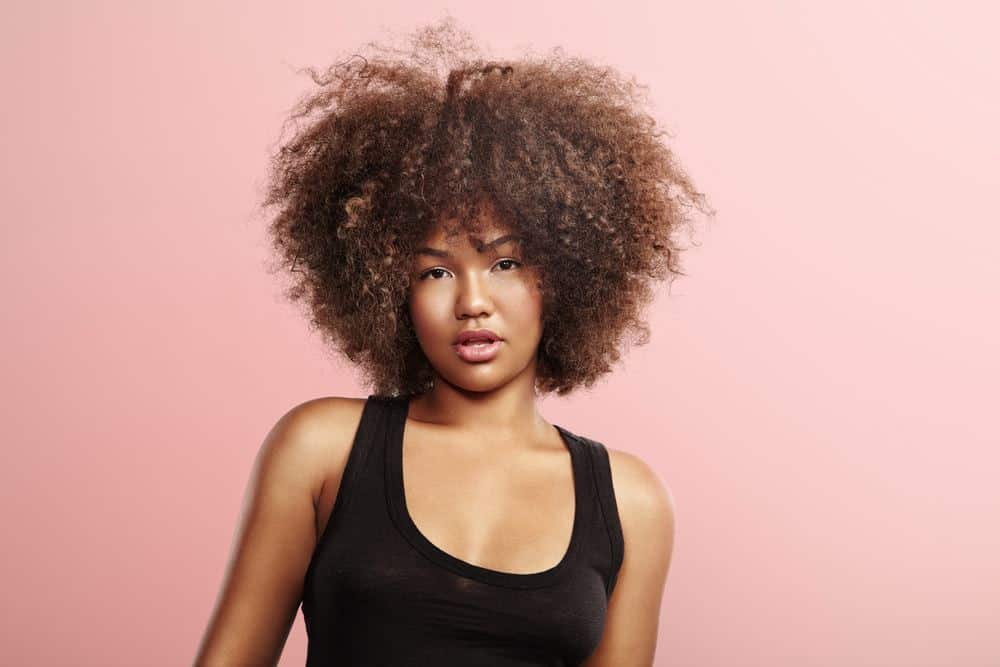
The primary thing to look out for is whether the product contains sulfates. Sulfates are a type of detergent or surfactant that is commonly used in most shampoos to assist with cleansing the hair.
Some examples of common sulfates include sodium lauryl sulfate, ammonium lauryl sulfate, sodium laureth sulfate, and ammonium laureth sulfate.
The higher the levels of sulfates in a product, the more it can remove buildup and dirt from your hair and scalp. However, too many sulfates in a shampoo typically reduce its ability to moisturize your hair effectively.
Here are a few general rules when choosing a moisturizing shampoo:
If the shampoo contains multiple sulfates, stay away. Shampoos like these will not moisturize your hair very well, they are useful for removing product build-up, dead skin, and stubborn deposits.
Shampoos that contain sulfates are best for clarifying the hair rather than moisturizing it. In the standard formulations, there is around 45-75% water and 25-55% surfactant or detergent. This ratio doesn't really leave any room for any conditioning agents.
Any shampoo that contains more than one sulfate is not classified as a moisturizing shampoo. The detergents present dry the hair, and they will never assist you in maintaining moisture balance in your hair.
If you insist on using a moisturizing shampoo that contains sulfates, the laureth sulfates are more gentle on the hair compared to the lauryl sulfates. In addition, sodium myreth and tricedeth sulfates are more gentle derivatives.
This means a shampoo that contains these sulfates will offer you some amount of moisture depending on the other types of ingredients present in the formulation.
2. Does the Moisturizing Shampoo Contain Gentle Surfactants?
Even when you try to stay away from stripping-sulfate cleaners, your shampoo will not be very effective if it is unable to remove product-up buildup and properly clean your hair.
The types of surfactants that you should expect to find in a moisturizing shampoo include hydroxysultaine, isethionate, sulfosuccinate, lauryl polyglucose, and cocamidopropyl betaine.
These ingredients are known as secondary surfactants and are much more gentle on the hair. The primary surfactants are harsh sulfates that we discussed earlier in the article.
3. Salon vs. Drugstore Moisturizing Shampoos
When choosing between a moisturizing shampoo that contains sulfates from a salon between a moisturizing shampoo that contains sulfates from a drug store, always purchase the salon version.
While not always true, it's common for salon shampoos to contain higher levels of emollients which counter the effects of the sulfate detergents present in the formulation.
The shampoos in drugstores often contain high levels of cleansers and water, but more than often, are missing the important fatty acids, conditioning oils, and emollients. For this reason, when possible, always choose a salon shampoo over a drug store formulation.
Selecting a Moisturizing Deep Conditioner
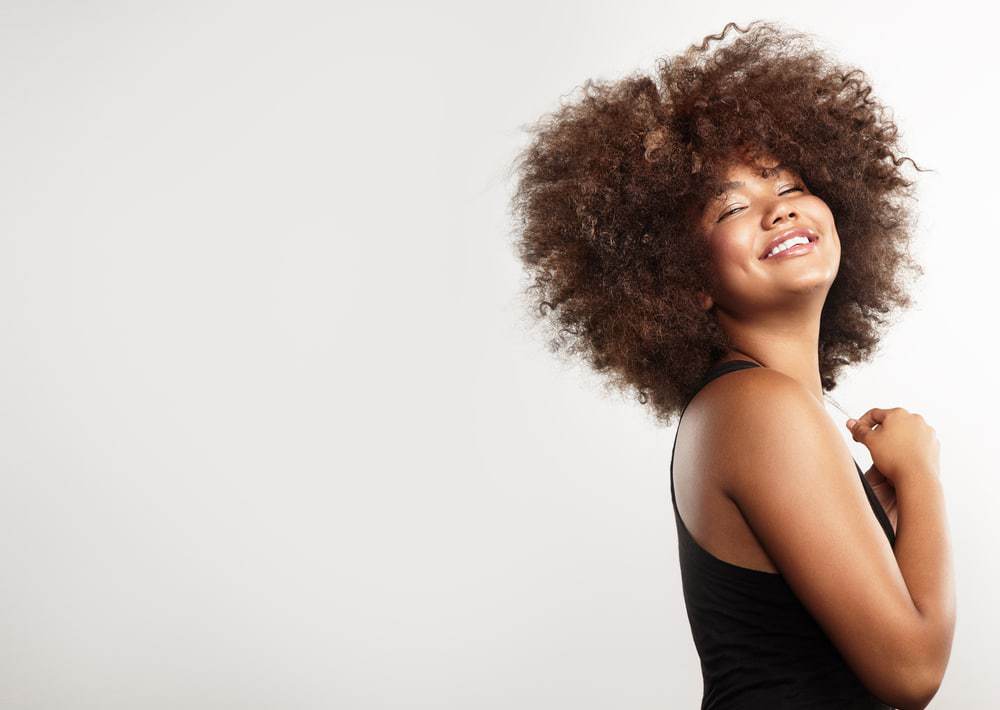
Although water-based moisturizers increase daily moisture, they are no match for the conditioning power that modern moisturizing deep conditioners provide.
While some of the hair product mistakes you make when it comes to your hair regimen can be excused, incorporating a moisturizing deep conditioner is a requirement.
A moisturizing deep conditioner is no doubt the foundation of healthy natural hair regimens. While most moisturizing deep conditioners contain protein, silk and wheat proteins are very common in deep conditioners.
These proteins are very gentle and enhance your hair's elasticity by aiding moisture binding within the cuticles. As such, don't worry if you see these proteins in your conditioner.
What Should You Look for in a Moisturizing Deep Conditioner?
 1. Fat
1. Fat
When shopping for a moisturizing deep conditioner, look for a conditioner with a high “fat” percentage.
What does that mean?
You want a moisturizing deep conditioner that has lots of fatty alcohol in it. Fatty alcohols are hair-friendly alcohols and are unlike alcohols found in most finishing sprays, which often dry the hair.
Common fatty alcohols include stearyl alcohol, myristyl alcohol, cetyl alcohol, and cetearyl alcohol.
2. Emollients, Humectants, and Conditioning Agents
Humectants are unique substances that draw moisture from the air around the hair. Common emollients, conditioning agents, and humectants you want in a moisturizing deep conditioner include sodium lactate, glycerin, sodium PCA, propylene glycol, sodium lactate, cetrimonium chloride, glyceryl stearate, polyquaternium, hydantoin, and other natural oils and waxes.
3. Silicones
The mention of silicones often elicits a lot of criticism from many hair-conscious critics (i.e., natural hair gurus); however, silicones actually work very well for most people.
Silicones have earned a bad rep on many natural hair forums and are considered to be a moisture-defeating, scalp-clogging, plastic-like hair coating. However, not all types of silicones are bad, and some silicones actually very useful.
Good silicones can help improve your ability to detangle wet hair. Some of the softness and sleekness you'll feel after rinsing out conditioners is due to some of the silicones within the product.
Everything has its pros and cons, including silicones, but a reliable moisturizing deep conditioner containing silicone might work wonders for you.
Remember that it's important to experiment with your hair because you're the real natural hair guru.
If the list of ingredients in your moisturizing deep conditioner reads like water, silicone 1, silicone 2, silicone 3, silicone 4, and so forth, then reevaluate the product’s purpose.
Conditioners with a list of ingredients similar to the example mentioned above aren’t deep hair moisturizers. While this might give your hair an awesome shine and make detangling a breeze, the conditioner will consequently lead to hair dryness due to a lack of moisture deposits within your hair strands.
If you have a conditioner like this, consider using it as your final conditioning rinse; that’s after you have done your main moisturizing deep conditioning.
Some silicones create more breathable layers around your hair than others. Any kind of silicone like amodimethicone is stubborn to remove from hair shafts. Such silicones will often need to be removed with a clarifying shampoo.
If the moisturizing deep conditioner you use is silicone-heavy, consider clarifying your hair at least twice a month.
If you wash your hair using a conditioner regularly (co-washing or Curly Girl Method) or wash your hair without shampoo, then you probably want to avoid silicone-rich products.
Without shampoo assisting removal, silicones can build up around your hair, leading to excessive dryness.
Things to Avoid
What are some of the ingredients to avoid in a moisturizing conditioner? Try and avoid moisturizing deep conditioners containing heavy proteins, mineral oils, petrolatum, and other similarly heavy oils.
These deep moisturizing conditioners will coat your hair. If your hair doesn’t handle silicones very well, then consider steering clear of these products.
Other Moisturizing Conditioning Products
For water-based moisturizers and moisturizing leave-in conditioners, you want fats, emollients/humectants, water, and some detangling support from light oils or silicones.
Using a moisturizing deep conditioner that contains some mineral oil is probably fine since it will be mostly rinsed away. Nevertheless, we recommend avoiding mineral oil altogether if possible.
How to Use a Moisturizing Deep Conditioner
- Use Sulfate-free shampoo. Saturate your hair using warm water for about five minutes. Make sure that all topical dirt, oil, product build-up, and dead skin on your scalp and strands are removed before applying your moisturizing shampoo.
- Rinse your shampoo thoroughly. Apply your moisturizing deep conditioner and cover your hair with a plastic cap. Learn more about the baggy method with this article.
- Sit under a hooded dryer for roughly twenty minutes. Make sure that your dryer is set on low-to-medium heat. Please note that dryer times will vary depending on the product you are using and your preference.
- Rinse off the conditioner with cold water. Apply the leave-in conditioner and style as preferred.
Protective Styling: Creating a Natural Hair Regimen to Promote Growth
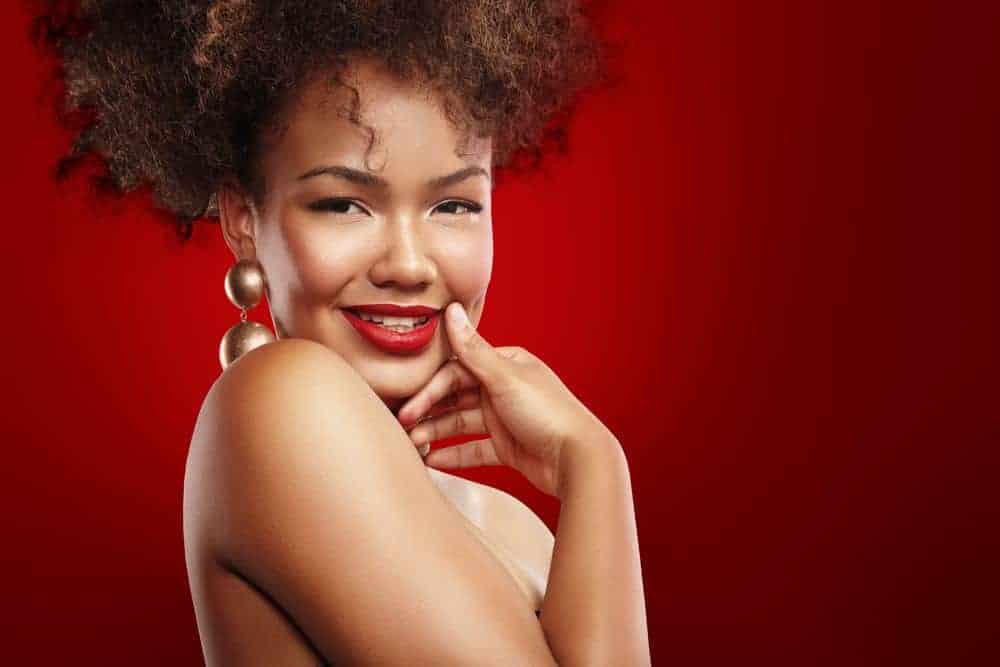
We've written a comprehensive article on hair growth, so in this article, I will only cover a few important highlights. Hair growth is a process that happens in 2 stages: emergence and retention.
The initial stage is pretty straightforward and involves the emergence of new hair from the hair follicles on the scalp. The process of emerging is natural and occurs unconsciously in human beings.
Apart from living a healthy lifestyle and eating a balanced diet, there is not much you can do to improve the emergence of new hair from the scalp.
However, many people have a misconception that this process can somehow be altered or manipulated.
We assume that if we can find a way to increase the rate of new hair growth from the scalp, we can successfully grow the long, beautiful hair that we have always wanted.
This may seem possible in theory, but without considering the second stage of the hair growth process, this theory remains a theory (and nothing more).
When hair emerges from the scalp, the next phase is the retention of the hair, specifically the ends.
While the emergence of hair occurs independent of our actions, retention is highly dependent on our efforts because it requires active hair care and grooming to be successful.
Without retention, no single strand of hair can survive, even if the follicles on the scalp keep pushing out new hair. So, how do we promote the process of length retention so that the hair that emerges from the scalp stays intact?
We advocate for a method referred to as protective styling.
Introduction to Protective Styling for Natural Hair
Protective styling is somewhat self-explanatory. It involves the use of styles and techniques that protect the ends of hair from splitting, breaking, or otherwise becoming damaged.
Protective styling is extremely crucial, especially for relaxed hair. When your hair is exposed to the elements outside, it will begin to dry out.
Without incorporating protective styling techniques, the ends of your hair may suffer breakage and split, mostly caused by your hair rubbing back and forth across blouses, cotton shirts, or other clothing items.
If you allow this damage to continue for several weeks or months, your ability to retain your hair length may diminish significantly. This is when people often believe that their hair isn't growing, which isn't true in most cases.
Assume your hair was a sponge. Now, what happens when you leave a wet sponge out in the sun for an extended period of time? The sponge becomes dry and rigid.
The moisture it once held evaporated into the atmosphere leaving the sponge dry and hard. The same process occurs with your hair.
When you expose your hair to the same conditions, it will also become dry and rigid after a period of time.
Reaching New Hair Growth Lengths
We commonly hear about women that are able to achieve new hair growth lengths with their hair after incorporating protective styling concepts into their regimen.
We believe that protective styling can help you push your hair beyond its normal length.
If you watch natural hair videos on youtube or read other hair blogs, you'll notice that many women can grow their hair to amazing lengths without using any form of protective styling.
However, for many women, protective styles are a must if you want long, beautiful hair. Generally speaking, in our experience, the women who don't need to use protective styling are usually those with low heat and low manipulation regimens.
The exceptions to this rule are very rare. You can expect one trade-off or another in most cases. Even if the use of protective styles is not a mandatory requirement for hair growth, it definitely comes in handy for promoting the retention of your existing hair.
If you frequently experience problems with growing long hair, we recommend that you consider incorporating protective styling concepts into your natural hair regimen.
If you're simply not interested in protective styling, you can wear protective styles sparingly (a few days a week) and leave your hair free on the weekends. This is a simple technique that anyone can use to preserve the length of their hair.
Types of Protective Styles

There are two main types of protective styles: complete and low manipulation. A natural hair care regimen should make use of both types of styling for the best results.
Complete protective styles involve having the ends of the hair out of sight. These styles protect the ends of your hair "completely," and examples are sew-in weaves, wigs, ponytails, tucked styles, and all varieties of buns.
Low manipulation styles, on the other hand, expose the ends of your hair to some extent. Although, they protect the hair by reducing the amount of manipulation (handling/combing) needed to maintain the hair.
Examples of these styles are twist-outs, braid-outs, pinned-up styles, cornrows, and braids (examples include box braids, goddess braids, poetic justice braids, crochet braids, and Ghana brands).
The most effective protective styles do not involve heat. Reducing the amount of heat you expose your hair to is critical for length retention and promoting hair growth.
Protective Styling for Short Hair
Short hair is a protective style by itself. The ends of your hair do not split or break from rubbing against your clothing or back during the course of the day.
With short hair, your only worry is protecting it from damaging elements like heat, cold, rain, and wind. Fortunately, this is pretty easy to do with the help of a hair moisturizer that seals the ends of your hair.
Hair at this length is usually very easy to manage and protect. However, you should keep your hair away from heat as it can still cause considerable damage. Only use heat when necessary.
The best protective styles for short hair include pin-ups, straw sets, bantu knots, twist-outs, and braid-outs. Some women use braids to help their hair to grow longer.
Once your hair reaches your shoulders, you can start wearing buns. Buns are simply one of the best protective styles available. Buns are effective, but only on hair that has reached certain lengths.
Kira's Natural Hair Regimen
Note that the remainder of this article was written by Kira Byrd, co-founder of Curl Centric. Whenever I think of creating or adjusting my natural hair regimen, Proverbs 22:6 resonates. “Train up a child in the way they should go, and when he is old, he will not depart from it.”
The purpose of your natural hair regimen is to train your natural hair.
There are three questions that I want you to ask yourself when creating your regimen and buying products.
- Is this as simple as it can be? I strive to maintain a simple natural hair regimen.
- What part will this product play in my natural hair regimen?
- Should this be done weekly, every two weeks, or monthly?
Weekly or Every 2 Weeks
- Pre-poo
- Cleanse
- Moisturizing Conditioner
- Seal
Monthly
- Pre-poo
- Cleanse
- Protein Conditioner
- Deep Condition
- Seal
Your natural hair regimen does not have to be complicated, and you do not need a plethora of products.
Each element of your natural hair regimen should have a particular purpose. Each product that is a part of your regimen should serve as a primary contributor to that purpose.
This mindset will help you streamline your product selection, usage, and expenses. The essential elements of a traditional natural hair regimen are cleansing and conditioning.
However, naturally curly hair has additional needs including:
- Pre-pooing
- Cleansing (clarifying)
- Proteins
- Moisture conditioning (deep conditioning)
- Sealing
The specific purpose of each element of your regimen:
Pre-shampoo treatments should be used to add moisture to the hair. This is done before shampooing with harsh shampoos that strip the hair of its’ moisture.
Kira's Pre-poo Treatment Recipe
- ¼ cup of almond oil
- 2 tablespoon of melted shea butter
- 1 to 2 capfuls of olive oil
Directions: Mix all contents in a bowl. On wet or damp hair, pour the oil mixture over your hair. Cover hair with a plastic cap for about 10 minutes. This is done before washing or starting another treatment.
Cleansing is a two-part equation. It involves cleansing the scalp and cleansing the hair of old products (clarifying). It is critical to clean the scalp to rid it of environmental toxins and product build-up.
These toxins and build-up smother the scalp. This prevents the natural hair fa to secrete. Also, blocked hair follicles can cause a host of other scalp-related issues and problems.
Clarifying shampoos or cleansers strip the hair. This striping is almost to the point that the hair can “sing” or squeak. It gives the hair the ability to start over with a “clean” slate, so to speak.
Clarifying the hair before introducing a new product is the same as starting with a fresh canvas when you are painting. It gives you a starting point to determine the performance of the product on clean hair.
Clarifying ends the relationship of previous products with the hair by stripping them away. Clarifying should not be done on a regular basis. Adding this process to your monthly regimen or as needed will prove to be beneficial.
If you have extremely dry hair, clarifying should be minimized. If you use products that contain “cones”, a moisturizing shampoo will not remove the “cones”; a clarifying shampoo is needed.
The clarifying shampoo that I use is Giovanni Tea Triple Treat Invigorating Shampoo.
Protein Conditioners – Mild protein help to moisturize and add strength to the hair strands. Healthy hair strands should be pliable and strong. They shouldn't be too stretchy (a sign that you need protein).
They also shouldn't be too stiff (a sign that you need moisture).
This is where the moisture-protein balance comes in. If you find that your hair is more elastic (stretchy) than normal, your strands may need protein.
Kira's Protein Conditioner Recipe
- 2 medium egg whites
- ½ cup of Greek Style Yogurt
- Thai Kitchen Coconut Milk Cream
- 1 cupful of olive oil
Directions: Mix all contents in a bowl. On clean, wet, or damp hair, pour the mixture over your hair and cover your hair with a plastic cap for about 15 minutes. Rinse with room temp water, not hot water.
You don’t want to cook the egg whites, do you? Deep conditioning is a MUST after a protein treatment. Protein treatments should be done on an as-needed basis.
4. Moisturizing conditioners are one category of conditioning for hair. Particularly, moisturizing conditioners should do one thing. They should moisturize the hair with ingredients like humectants, emollients, and oils.
5. Deep conditioning is needed, especially after the hair has been stripped using harsh ingredients or after a reconstructing protein treatment. I use Giovanni Direct Smooth as Silk or a homemade recipe with a heating cap for at least 15 minutes.
Kira's Deep Conditioning Recipe
- 1 medium avocado
- Thai Kitchen Coconut Milk Cream
- 1 – 3.5 oz container of baby bananas – if you use whole bananas, puree those bad puppies like your life depends on it! If it is chunky on your finger, it will be chunky in your hair.
6. Sealing your hair strands with oil or butter should be done to “trap” in the moisture from the water and deep moisturizing conditioner. Remember that when your hair is wet, it is 100% moisturized. I like to use 100% yellow shea butter, almond oil, or avocado oil.
Sealing the hair should be done with every wash. Remember that a lot of products have dual purposes and can be doubled up instead of buying two products.
The last step is to rinse the hair with cool water. This will close the hair cuticle, which helps to reflect light providing shiny hair.
Clean out Your Closet or Underneath Your Sink
It’s time to go to the product cemetery and exhume the dead.
LOL!
Ok, no more mortician jokes.
Seriously, take all of your hair products and accessories out of the closet or cabinet to see what you have. Take a heart-to-hair inventory of products and accessories that you have.
Make the decision to keep or trash products based on three things:
- Your budget
- Your desire to keep the product – only keep products that you will use
- The expiration date of the product
The easiest and the most expensive thing to do is throw it ALL in the trash and start over.
However, you could easily be throwing money away if you decide to repurchase these products later. Some products can serve dual roles. For example, oils that are used as your pre-poo can be used as your sealant and your body!
Expensive Hair Products: To Buy or Not to Buy
I can honestly say that some of the most inexpensive "cheap" products have worked well on my hair. When I started my natural hair journey, cheap products benefited me in a major way.
They gave me the opportunity to experiment without paying an arm and a leg for products that I was unsure about. I know it may sound crazy, but sometimes you must stop and ask: What purpose will this product serve in my regimen?
Your answer has to be sound and logical. You have a choice to buy or not buy an expensive hair product. So what do you do?
When you're a new natural, try inexpensive products first.
Once you learn more about your hair, you can upgrade to more expensive products if you decide to do so. Also, please do not let the fact that a product smells good to be the deciding factor for your purchase.
Give Your Current Hair Products a Chance
Giving your products a chance is about making a commitment, experimentation, and note-taking. Yes, you have to take notes. Plan to use products for four consecutive weeks before you make a decision to repurchase or discard them.
This should give you ample time to use the products in various ways to get a feel for what the products can do and to see if they live up to their purpose.
It is fair to expect that your hair’s reaction may not be favorable at first. However, continued and consistent use can give a different result once your hair has a chance to adapt to the new products.
Before using new products, clarify your hair so that you can start with a clean slate.
Take Action
Clean out your product inventory.
- Take a picture of your product cemetery.
- Upload it to your Facebook page.
A Simple Natural Hair Routine for Maintenance
Having a natural hair regimen is more than the products you choose to put on your hair. It also includes what you do to maintain your hair.
For many women with natural hair, the money and time spent on hair products and beauty shop visits reduce significantly.
So what’s the problem, you ask?
Many women haven’t settled on a natural hair maintenance regimen that will give them the results they want.
Learning to work with your hair’s tendencies will reduce the stress and frustration associated with maintaining hairstyles. The style that you choose ultimately dictates how the style will be maintained.
The purpose of a maintenance regimen is to help preserve the freshness of your natural hairstyle for several days without having to do much else. The solution is to develop a natural hair maintenance regimen that will day in and day out give your hair what it needs.
Ask Yourself These Three Questions
- Does my maintenance regimen protect my natural hair?
- Does my maintenance regimen allow me to moisturize?
- Does my maintenance regimen produce the desired results all day?
Satin vs. Cotton
Protecting your hair from the wind and sun is crucial, but so is protecting your hair from lint and dryness. Lint, along with your hair’s tendency to coil around itself, is the core of most knots.
I had a co-worker who was standing behind me and said, “Oh, let me get this knot out for you”. I said, “Sure, but don’t snap it off”.
She gently untangled that bad boy, and a piece of lint from my sweater had curled itself up in my hair. If you are sleeping on cotton pillowcases, there are two culprits: lint and dryness. I’ve talked about lint, but dryness is so subtle.
Your cotton pillowcase is robbing you blind.
Cotton Ball Test
If you drop a cotton ball in a small amount of water, the cotton ball will absorb the water robbing the jar of the liquid. Applying that same logic to natural hair, sleeping on a cotton pillowcase sucks moisture from your hair.
Sleeping on a satin pillowcase or using a satin cap at night will work wonders. Also, satin will not rob your natural hair of moisture. Just as our bodies need daily hydration, your natural hair needs to be hydrated as well.
One thing that I love about double-strand or 2 strand twists is that I can mist (add moisture) them at night. I use a water and oil mixture to mist my twist.
Then I put on a satin cap without suffering the repercussions of messing up my natural hairstyle. Once my hair begins to frizz, I create an updo style to wear for the next week.
Night Time Natural Hair Regimen for Any Curl Type
Twist styles are low maintenance, and it's easy to wash your hair while twisted!
Many set styles have to be wrapped or pin-curled at night. Some of the common ones include twists, braids, bantu knot outs, and straight styles.
These styles cannot easily be moisturized daily. Understanding how often your hair needs moisture will help you choose natural hairstyles.
How to Maintain the Twist Out
When I was a new natural, it took a while to gather the courage to wear my first wash and go. I was paranoid that my hair would dry out, frizz into a ball, or become flatter on one side.
I did have some frizzy hair accidents because I have hand-in hair syndrome (HIHS). HIHS affects the integrity of your set curl or twist pattern. I’d have to walk around with frizzed hair.
To combat the frizz on twist-out type styles, once I styled my hair, that’s it. I leave it alone and don’t touch it! Hand contact with the hair can cause frizz. When manipulating my hair, I wear rubber gloves.
I would rub the oil on my gloved hands and separate my curls, and do all manipulation at that time. I’d apply oil as needed to the gloves. This little trick has been a lifesaver!
I was convinced that I needed to carry at least an elastic headband with me, just in case. Then I remembered when I was relaxed, I carried hair accessories all the time.
Preserving or maintaining my natural hairstyle meant carrying accessories. I usually carry a headband, extra bobby pins, extra hair pins, and a wide-tooth comb.
So at any time, anywhere, I have what I need to have gorgeous natural hair all day long.
Create Your Natural Hair Regimen in 8 Simple Steps
- Take inventory of your current products.
- Understand the role that each product will have in your regimen.
- Create a monthly natural hair budget.
- Decide on your weekly, every two weeks, and monthly cleaning regimen.
- Use your products for four consecutive weeks to learn how to use the products.
- Find a few basic go-to hairstyles.
- Keep your hair moisturized.
- Protect your beautiful natural hair.
What Is a Natural Hair Regimen?
A natural hair regimen refers to a series of steps and products that someone with natural hair uses on a regular basis. The regimen can include everything from washing and conditioning to styling and protecting the hair. Some people also incorporate natural ingredients, such as oils and butters, into their hair care routine.
Why Is a Hair Regimen Important?
A hair regimen is important to keep your hair healthy and strong. When you follow a consistent hair care routine, you can help to prevent damage, breakage, and other issues that can lead to hair loss or thinning. A hair regimen also helps to keep your hair looking its best by promoting shine, volume, and manageability.
What Should I Do to My Natural Hair Daily?
The daily needs of your natural hair will depend on your hair type, texture, and current condition. However, some general recommendations include: moisturizing your hair and scalp with water or a leave-in conditioner, using a wide-tooth comb or your fingers to detangle your hair gently, and protecting your hair with a satin or silk scarf or bonnet while sleeping.
How Do I Start a Natural Hair Routine?
Do some research and experimentation to find what works best for your hair. Start by learning about your hair type, texture, and the specific needs of your hair. Consider factors such as how often you need to wash your hair, what types of products work best for your hair, and what styling techniques are most effective.
What Is a Good Hair Regimen for 4C Hair?
To care for 4C hair, a good hair regimen should include shampooing with moisturizing once a week, applying a moisturizing deep conditioner, incorporating protein-based treatments and conditioners, using a leave-in conditioner, applying a water-based moisturizer, sealing in moisture with natural oils, choosing protective styles, and reducing heat styling. This will keep your 4C hair hydrated and healthy.
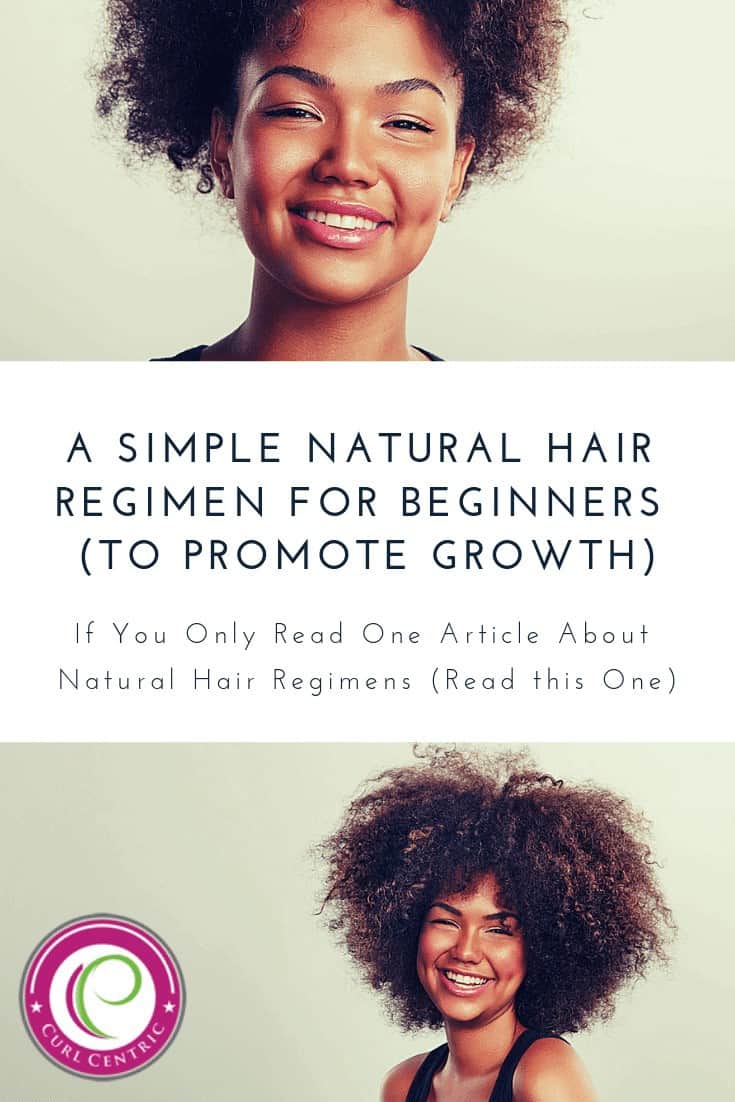

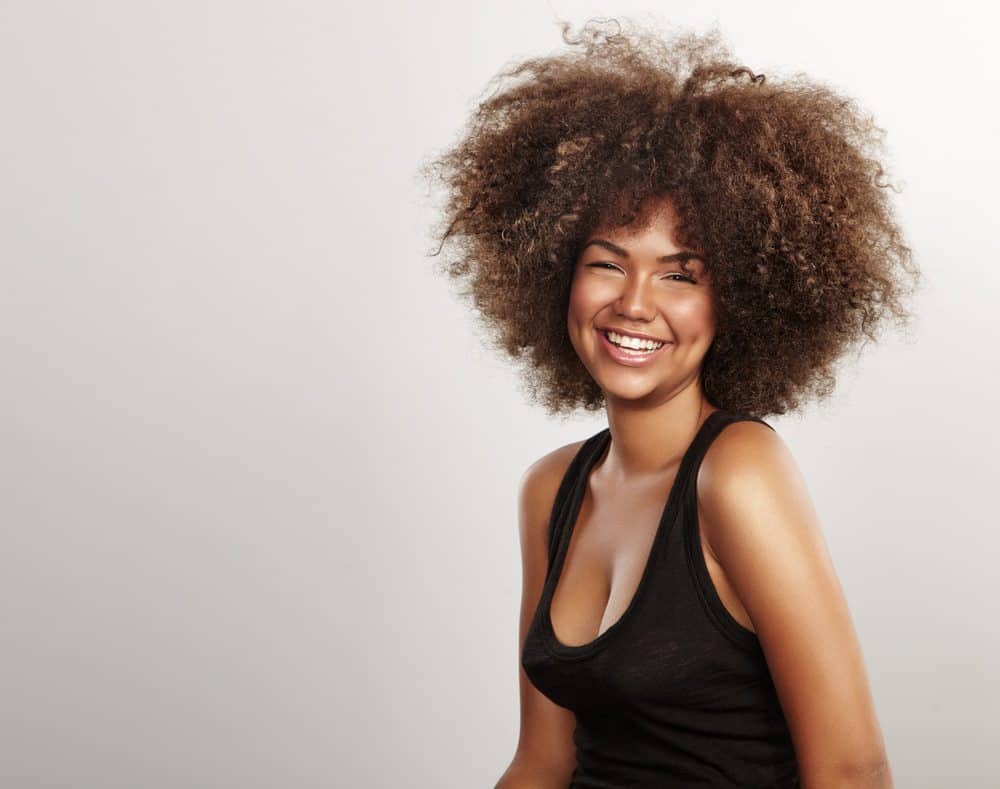 1. Shampoo
1. Shampoo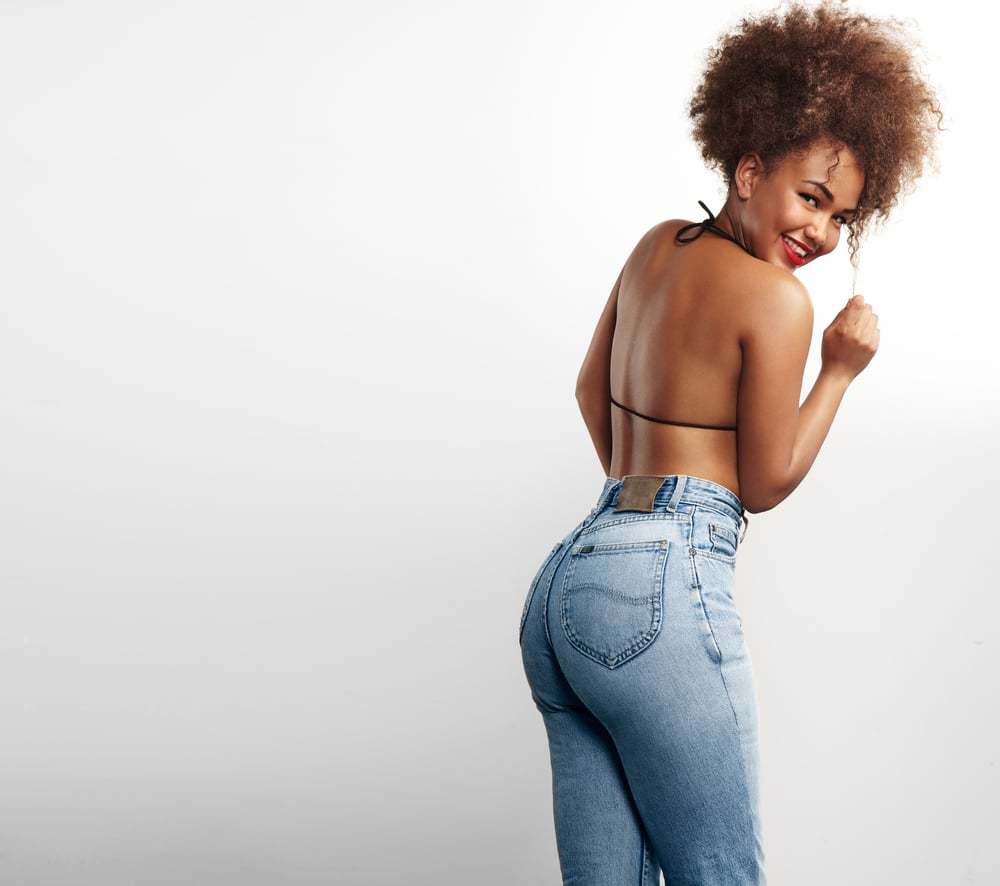 1. Fat
1. Fat


